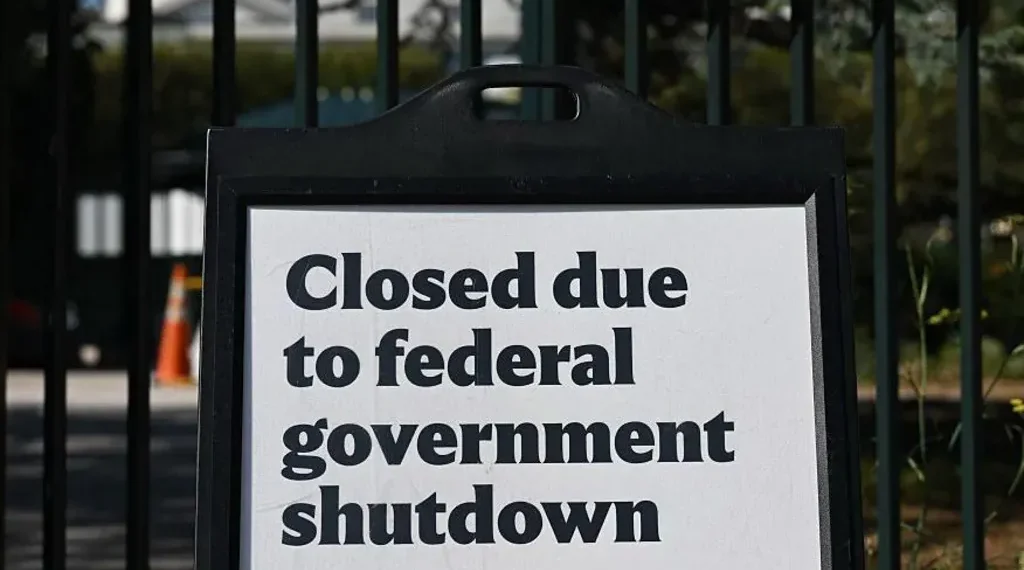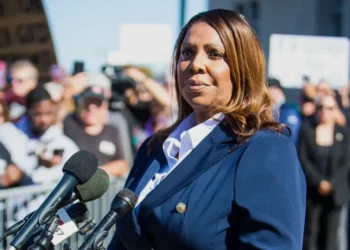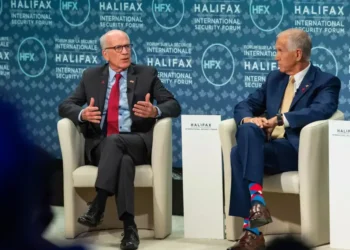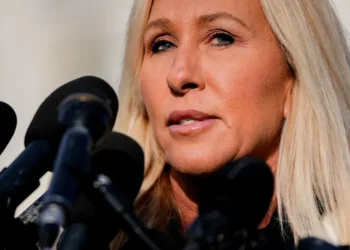The US government is now in its third week of shutdown, leaving millions of federal employees furloughed or working without pay. Political disagreement over healthcare, budget allocations, and spending cuts has prevented Congress from passing a funding bill, deepening economic uncertainty.
Why the US Government Shutdown Happened
The shutdown began at 00:01 EDT on 1 October after Congress failed to pass a spending bill to fund federal services beyond the fiscal year deadline. In the US system, both chambers of Congress must approve the budget, which the President then signs into law. While Republicans control both the House and Senate, the party lacks the 60 votes required in the Senate to overcome Democratic opposition.
Democrats are pushing to extend expiring tax credits that reduce health insurance costs and to reverse cuts to Medicaid, which provides healthcare for low-income, elderly, and disabled Americans. They also oppose reductions to funding for public health agencies. A stopgap measure intended to prevent the shutdown passed in the House but failed in the Senate, triggering the partial closure of government operations.
President Donald Trump has characterized the impasse as an opportunity to reduce government size further. He has warned of permanent layoffs for “non-essential” workers and indicated that back pay for furloughed employees might not be guaranteed, a move challenged by Democrats who cite legal entitlement to retroactive pay.
Key Differences This Shutdown Presents
Unlike previous budget confrontations, this shutdown is notable for the administration’s willingness to extend furloughs and pursue permanent reductions in federal staff. The Trump administration has already attempted to lay off approximately 4,000 employees, though a federal judge temporarily blocked the action. Republicans advocate negotiating healthcare separately and passing a “clean” resolution to fund the government, while Democrats insist on maintaining provisions for affordable health coverage.
Senate Majority Leader John Thune has described the situation as entrenched, with multiple votes to reopen the government failing over the past three weeks.
Government Services Affected and Those Continuing
Essential services, including law enforcement, border protection, and in-hospital medical care, continue to operate. Non-essential employees, however, are on unpaid leave, affecting research projects, federally funded programs, and public services. Air traffic controllers working without pay have caused flight delays and cancellations, while some military personnel received temporary funding to avoid missing paychecks.
The Supplemental Nutrition Assistance Program (SNAP), or food stamps, has exhausted federal funding, potentially affecting 41 million beneficiaries if the shutdown continues past 1 November. Social Security and Medicare distributions remain active, but certain verification and card issuance tasks are paused. National parks, monuments, and museums, including Alcatraz Island and the interior of the Washington Monument, have closed to visitors, with concern for damage or vandalism based on past shutdown experiences.
Economic Implications of the Shutdown
Government shutdowns typically reduce economic growth temporarily, though effects are widespread. Daily delays in federal contracts—estimated at $800 million per day—impact small businesses and contractors who do not receive retroactive pay. Analysts project a weekly reduction of 0.1 to 0.2 percentage points in economic growth, or roughly $15 billion per week.
The shutdown also disrupts the release of critical economic data, such as employment statistics, creating uncertainty for policy decisions and financial markets. Extended shutdowns could exacerbate losses, particularly during the crucial November–December holiday season.
Historical Context: US Government Shutdowns
Shutdowns are unique to US politics and have become relatively common over the past 50 years. The longest in history lasted 35 days under Trump in 2018–2019, over funding disputes for a border wall with Mexico. That shutdown temporarily crippled air travel and cost an estimated $11 billion in lost economic output, including $3 billion that was never recovered.
Other notable shutdowns include a 21-day closure during President Bill Clinton’s administration in 1995, a 16-day closure under Barack Obama, and multiple brief shutdowns under Ronald Reagan. These historical events demonstrate that extended shutdowns can produce lasting economic and operational disruptions.
Political Dynamics Behind the Deadlock
The current stalemate is intensified by ideological and strategic differences. Republicans seek to limit concessions, hoping Democrats will bear public criticism. Democrats, pressured by the party’s progressive wing, prioritize healthcare funding and oppose unilateral spending cuts. President Trump’s approach diverges from prior administrations, showing a readiness to maintain closures for extended periods and reduce government operations permanently.
This conflict underscores structural aspects of US governance: the Senate’s 60-vote threshold grants minority leverage, and the division of powers allows the executive to influence negotiations through public statements, administrative actions, and budgetary maneuvers.
Impact on Everyday Americans
Beyond government employees, shutdowns affect millions of Americans indirectly. Loan approvals, student grants, permits, and federally funded projects are delayed. Air travel experiences disruption due to understaffed air traffic control. National parks closures limit tourism, and suspended SNAP benefits threaten food security for low-income families.
Federal shutdowns highlight the dependence of local and state services on national funding, demonstrating how political deadlock at the federal level can ripple through the economy, social services, and infrastructure.
Looking Ahead: Prospects for Resolution
Reopening the government requires negotiation and compromise between Republicans and Democrats in the Senate, with final approval by President Trump. Analysts note that prolonged shutdowns could erode public confidence, disrupt economic recovery, and delay essential programs. Historical experience suggests that sustained disruption often pressures lawmakers to reach a settlement, but the Trump administration’s current posture—seeking permanent staff reductions and selective back pay—introduces new challenges.
Economic forecasts, voter sentiment, and media scrutiny may influence the outcome, but the timeline for resolution remains uncertain. Without an accord, furloughed employees, contractors, and program beneficiaries face ongoing hardship, while the broader economy may feel cumulative losses, particularly in the critical final months of the fiscal year.
This article was rewritten by JournosNews.com based on verified reporting from trusted sources. The content has been independently reviewed, fact-checked, and edited for accuracy, neutrality, tone, and global readability in accordance with Google News and AdSense standards.
All opinions, quotes, or statements from contributors, experts, or sourced organizations do not necessarily reflect the views of JournosNews.com. JournosNews.com maintains full editorial independence from any external funders, sponsors, or organizations.
Stay informed with JournosNews.com — your trusted source for verified global reporting and in-depth analysis. Follow us on Google News, BlueSky, and X for real-time updates.














